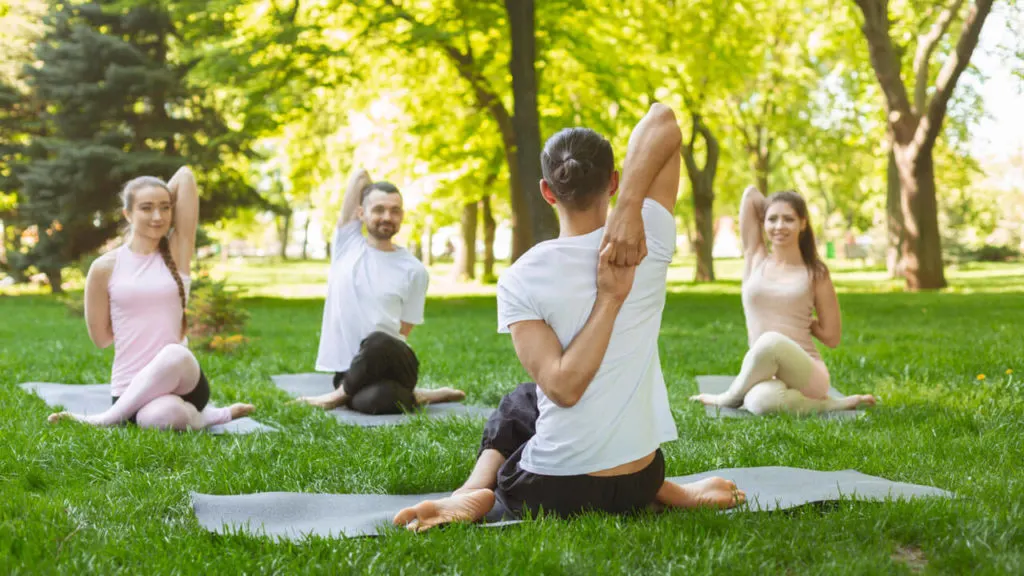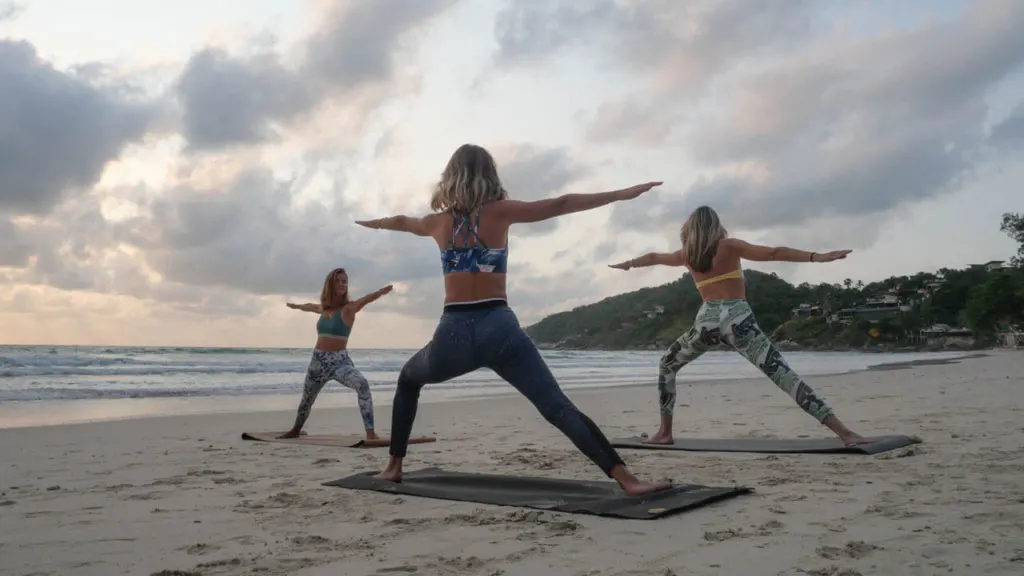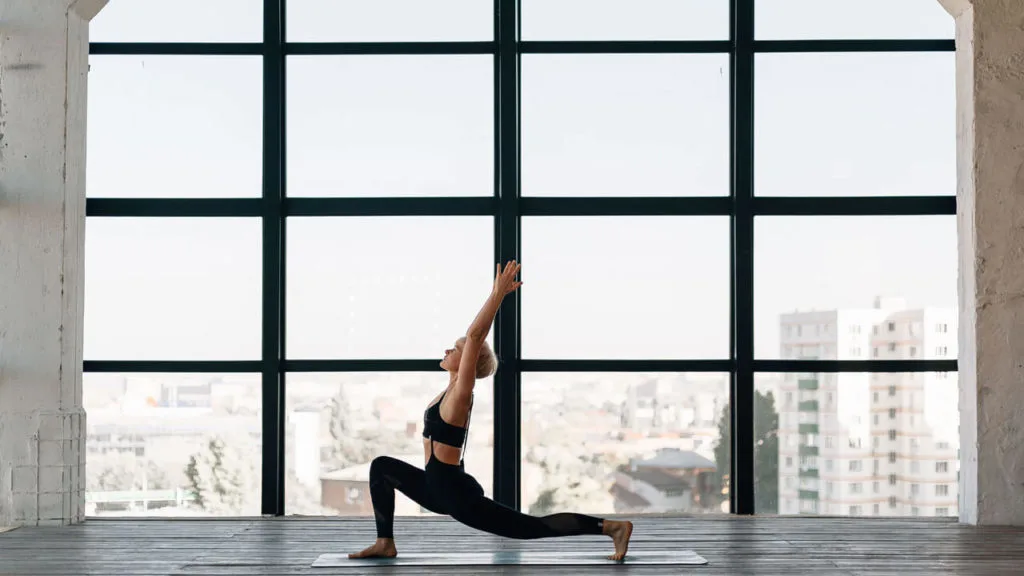Hey there future yoga teacher! Welcome to the beginning of your journey and research learning how to become a yoga instructor. The good news is that you’re here and it’s more simple than you may think. The bad news is that it will most likely take longer than you think! Regardless of your timeline, learning how to teach yoga and to be able to teach to students is a wonderfully fulfilling opportunity to share your passion, deepen your own practice, and perhaps supplement your current income, or become your full-time job! Let’s dive into all the details of this life-changing decision!

Why do you want to become a yoga teacher?
Before beginning any yoga teacher training course, the #1 question you must ask yourself is why you want to become a yoga teacher. Just like we’re most often taught to begin our practice by setting an intention, I encourage you to begin your yoga teacher training journey by setting an intention too. Is it because you want to share the joy of moving your body? Do you want to explore your passion for yoga in a new way? Do you feel that being a yoga teacher will bring your students (and most likely you) more happiness, bliss, and freedom? Perhaps you’re thinking that being a yoga teacher would be a great side hustle and offers you more on the side of your full-time job.
Whatever your reason for wanting to become a yoga teacher is, please don’t let it be about money. Focus deep on what becoming a yoga teacher will mean not only for you but also for your future students. Setting this intention will undoubtedly help you choose a course and path. But also know that as you begin your teaching journey and studies your intention may change. I started my training thinking that I just wanted to deepen my own practice. Now I’ve got a YouTube channel, blog about yoga, and teach!
4 Steps to Become a Yoga Teacher
1. Pick Your Style
First and foremost you must choose what kind of style you think you want to teach. I say think because this can change during your training. But you must begin somewhere! Most trainees will pick the style that they love to practice the most and this is a great place to start. Many training options offer multi-style courses, while others are specific to one style, such as Hatha, Ashtanga, or Kundalini, though most training will have Hatha as a basis as it’s so common.
It’s not uncommon for yoga teachers to love practicing one style but teach another (personally I love to practice Vinyasa, but I prefer to teach Yin), so be open to possibilities and do your best to not fit yourself into a box until you discover what style you are most passionate about and are the most talented at teaching.

2. Complete a 200-Hour Training
Picking a yoga teacher training course can be a bit overwhelming with so many options out there, I get it! Begin your search by first deciding if you are able to commit to a part-time or full-time training schedule. You’ll find lots of training in both categories, especially online or in cities. If you are looking for part-time training your best bet is to look at options in a city near you as lots offer weeknight or weekend training over a longer period, as do many online yoga teacher training.
For those who are looking to commit to a full-time training schedule, you have options around the globe! It’s up to you to decide where you want to go with the most options across Europe and Asia, and with many in North America too.
Why a 200-hour yoga teacher training?
A 200-hour yoga teacher training and the basic parameters are what has been set out by Yoga Alliance, the closest thing that yoga training has to any sort of governing body. This does not mean that you must complete a 200-hour course but it is highly recommended as it is seen as the basis for other training and for hiring teachers if you’re looking to work for a studio, gym, or corporate.
Should you do a 300 or 500-hour yoga teacher training?
You absolutely can but it doesn’t determine or guarantee you a job just because you have more training. Note that 300-hour training is usually advanced yoga teacher training that is completed as a separate course after you complete 200 hours. And 500-hour courses are a combination of 200 and 300 hours as one.
From personal experience I recommend taking a 200-hour course, practicing and getting your bearings as a teacher and then completing a 300-hour course. This gives you time to implement all the new knowledge you have and let it sink in before jumping into even more. Trust me, yoga teacher training courses are intense and a break between is something I always recommend.

3. Practice Teaching
It’s totally normal to feel a little (or a lot) nervous when you first begin teaching in front of people who aren’t your training instructors or fellow trainees. Practice teaching is the key to becoming a great teacher so hop up and offer to teach as much as you can during your training, and when you’re complete teach everyone you can.
Offer to teach for free, to all kinds of levels of yoga practitioners, even to people who have never taken a yoga class before. Ask about injuries, and for feedback. You will learn from everyone what different people like and how to handle teaching to a multitude of audiences. You can even practice teaching yourself or online by perhaps starting a YouTube channel.
Most yoga studios and other institutions that hire yoga teachers won’t hire you off the bat which is what also makes practicing essential. And don’t underestimate the power of a YouTube channel. It doesn’t matter how much people watch or practice your classes, I actually got my first job at a small studio and an audition at a large gym company by using my YouTube channel as a portfolio so they could see what my teaching style was like.
4. Start Applying for Yoga Jobs and Making Money
Don’t give up your day job right away, it will most likely take time to find your first teaching gig! This is not to discourage you but to be realistic. Even if you start teaching yoga online, it will take time to find students. Studios are more likely to want you to have previous teaching experience first but corporate and some gyms are okay with hiring teachers who don’t have previous experience, it all depends on the place and of course you as a teacher.

Additional Steps: How to Become a Certified Yoga Instructor
5. Apply for Certification
Getting your yoga certification is technically not a necessary step, but one that is recommended. Once you complete a yoga course you are a certified yoga teacher (CYT), and if you complete a 200-hour you could show your certification as CYT-200, or CYT-500 if you completed a 500-hour course. There is nothing wrong with being a CYT but you may run into issues if applying for yoga insurance as many insurance companies will want you to be a registered yoga teacher (RYT) first.
What’s the difference between a CYT and a RYT?
CYT stands for ‘certified yoga teacher’ and is the general designation that you’ll have once you complete your first yoga training. RYT stands for ‘registered yoga teacher’ and is for anyone who applies to be a part of Yoga Alliance, which is the closest thing there is to a governing body for yoga teacher training. The only difference is that you took a training that is registered with Yoga Alliance and once you pay your fee to join you will be listed in the Yoga Alliance directory as well as a teacher.

What is Yoga Alliance?
While not an official governing body, Yoga Alliance is what most schools, teachers, studios, and sometimes students will look to in order to confirm that the training and teacher are completed to a certain standard. This is not an exceptionally high standard, really it’s just the bare minimum, so note that it really just covers the basics and does not determine how great or poor a training or teacher is. Yoga Alliance is a non-profit association for the yoga community that is not necessary to join but certainly has its benefits.
Yoga Alliance is based in the US but there are others including the Canadian Yoga Alliance and Yoga Alliance Professionals (formerly known as UK Yoga Alliance). There are differences between these separate Yoga Alliances and they are not associated with each other. That being said, Yoga Alliance is typically recognized around the world and you can apply no matter where you’re based. For example, I’m Canadian and am registered with the US-based Yoga Alliance which is accepted here in Canada and if I am to teach abroad.
6. Get Covered with Yoga Insurance
Last, but certainly not to be overlooked is yoga insurance! As a yoga teacher you are now responsible for guiding your students through a safe practice. That being said, not everyone listens and accidents do happen, and as a teacher, you can be sued. Yoga insurance will cover you and is a necessary step if you wish to work in a studio, gym, and even online. Yoga insurance falls on the responsibility of the teacher, not the place where you may be employed. While it’s not necessary if you’re teaching online, it is a good idea to still be covered for those just in case moments as yoga insurance is affordable so it’s not something that will break the bank or brush off.

Becoming a Yoga Teacher FAQs
Is it worth training as a yoga teacher?
Absolutely, yes! It is a must-do step in order to become a yoga teacher to ensure that you are teaching a safe and effective practice but it is also a very fulfilling opportunity and a chance to deepen and understand your own practice.
What do you need to be a yoga instructor?
A minimum of 200-hour of yoga teacher training and/or certification, experience practicing, and teaching, as well as yoga insurance (recommended but not mandatory).
Can a beginner take yoga teacher training?
Yes, and no. It depends on the school where you choose to do training as some have a minimum requirement or recommendation for how seasoned you are as a yoga practitioner. As a beginner, you will come into training without any bad habits and with an open mind so it can absolutely be a positive!
How long should you practice yoga before teaching?
3 months of consistent practice (multiple times a week) is recommended to have you familiar with the basics, a yoga class structure, and for your fitness level.
Is it hard to become a yoga instructor?
You will no doubt work hard through your training and to find your first few gigs as a yoga teacher but the process is 100% worth it.
Can you make a living as a yoga teacher?
Yes, you can! Be mindful that yoga salaries differ greatly depending on where and what a yoga teacher is teaching. Most teachers diversify their income by working in a studio, teaching online, perhaps becoming an influencer to work with yoga brands, running a blog or YouTube channel, or even workshops.
What’s next?
- Get my How to Choose a YTT Mini Guide! Avoid scams, what you MUST consider & my top course recommendations
- Need a way to deepen your practice before YTT? Try my 30-day yoga adventure – Journey Home
- Practice yin & vinyasa classes with me on YouTube to prepare for your upcoming training

